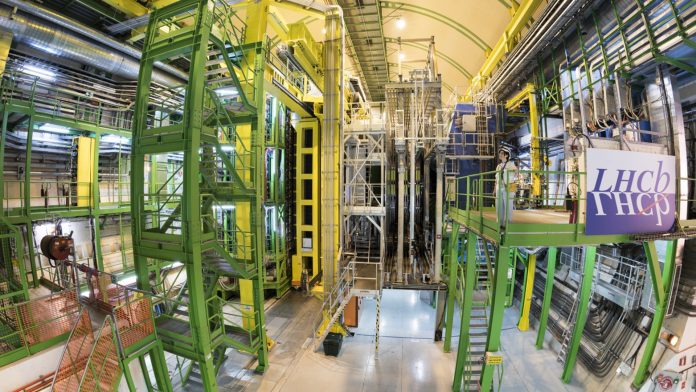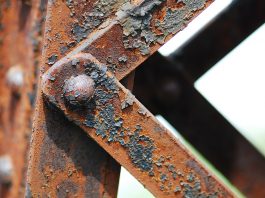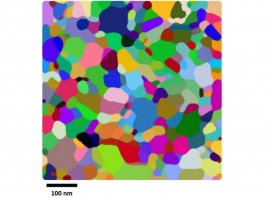The University of Edinburgh’s Gediminas Sarpis discusses how the new upgrades to CERN’s LHCb experiment could pave the way for immense discovery.

One of the key experiments at CERN’s Large Hadron Collider (LHC), the Large Hadron Collider beauty (LHCb) experiment specialises in investigating the slight differences between matter and antimatter by studying a type of particle called the ‘beauty quark’. The LHCb experiment uses a series of subdetectors to detect particles with high forward boost– those emerging from the collision point with trajectories very close to the LHC beam pipe. The first subdetector is mounted around the collision point, with electronics only 4mm away from the proton beam, with the others following one behind the other over a length of 20m. The LHC creates an abundance of different composite particles made out of quarks before they decay quickly into other forms. To detect the particles coming from beauty hadron decays, LHCb has developed sophisticated tracking detectors close to the path of the beams circling in the LHC.
In April 2022, the LHC was restarted after a three-year shutdown period for essential maintenance, consolidation, and upgrade work. During this time, the LHCb experiment underwent a complete revamp to increase its collision count by a factor of three. Updates included new detectors, trackers, front-end electronics, and a new data centre.
Editor Georgie Purcell spoke to Gediminas Sarpis, Postdoctoral Research Associate on the LHCb Experiment, to learn more about the LHCb’s aims and objectives, new capabilities, and the potential for future discovery.
Can you tell us more about the LHCb and how it differs from the other LHC experiments?
The LHCb is one of the four main experiments at the LHC. The difference is best seen in the name, as the ‘b’ stands for beauty. Initially, the experiment was designed to probe beauty quark physics, which is one of the heavier quarks in the Standard Model. Specifically, it was built to search for matter-antimatter asymmetries, different kinds of flavour physics dynamics, and different kinds of physical measurements.
Since then, the LHCb physics programme has drastically expanded, and we now carry out a plethora of different measurements. A big part of our work is the search for rare and forbidden decays that would not be a part of the Standard Model, such as the investigation of flavour anomalies, lepton flavour universality measurements, and lepton flavour violation measurements.
We also have a fixed target programme, where we carry out physics using a system called SMOG (System for Measuring Overlap With Gas). We inject different kinds of gases into the beam, and then hit those gas atoms or gas nuclei with a proton beam to see what happens.
To illustrate the differences, other LHC experiments, such as CMS and ATLAS, are general-purpose detectors and have a huge physics programme but are not optimised to perform the measurements that the LHCb does. The LHCb, however, has a different, forward-facing design that is mainly focused on heavier quarks and heavier composite particles with heavy quarks in them.
What did the long shutdown period of the LHC mean for the LHCb and how has it been improved since?
The upgrade has had the biggest impact on the LHCb in terms of experiments, as the detector has been completely rebuilt. Less than 5% of the original hardware is still used in the LHCb, as we replaced all of the old systems. The hardware is new, state-of-the-art, digitised, and much more precise, which will allow us to take even better measurements than before.
What has been achieved in the experiment since the start of Run 3?
Since this is basically a new detector, we are currently in the commissioning phase. Just several weeks ago, we finally put in the last piece – the upstream tracker – and cabled it. All the different subdetectors are being tested and commissioned. We are also examining the first sets of data to ensure that all the physics we want to do can be seen, carried out, and is accessible.
Of course, we are also looking ahead to future physics. This involves a huge effort in terms of simulation and trying to map the physics quantities that we will get with the new detector responses.
We also have data from the original LHCb experiment and, therefore, a lot of analysis is still ongoing. I expect it will take years until we digest the data fully.
What are the long-term goals/hopes for the LHCb collaboration?
The golden goose is to find new physics – something beyond the Standard Model. There is a lot of analysis aiming for very rare decays; lepton flavour violation measurements; searches for exotic particles; etc. In the long term, there is going to be a lot of effort put into these things. However, I think it’s important to remember that, regardless of these grandiose physics goals and objectives, the precise measurements will allow us to get a better understanding of important quantities and dynamics within the Standard Model.

© 2019 CERN, for the benefit of the LHCb Collaboration
What we are doing in the LHCb can be described as building a table of elements. We find composite states of multiquarks almost every year. This will be an ongoing part of our physics programme and we will continue to find new states of matter, new states of particles, and excited states. I am very hopeful that we will get to this golden goose and find something that either we didn’t expect or find something that can confirm an earlier prediction.
Please note, this article will also appear in the fourteenth edition of our quarterly publication.









